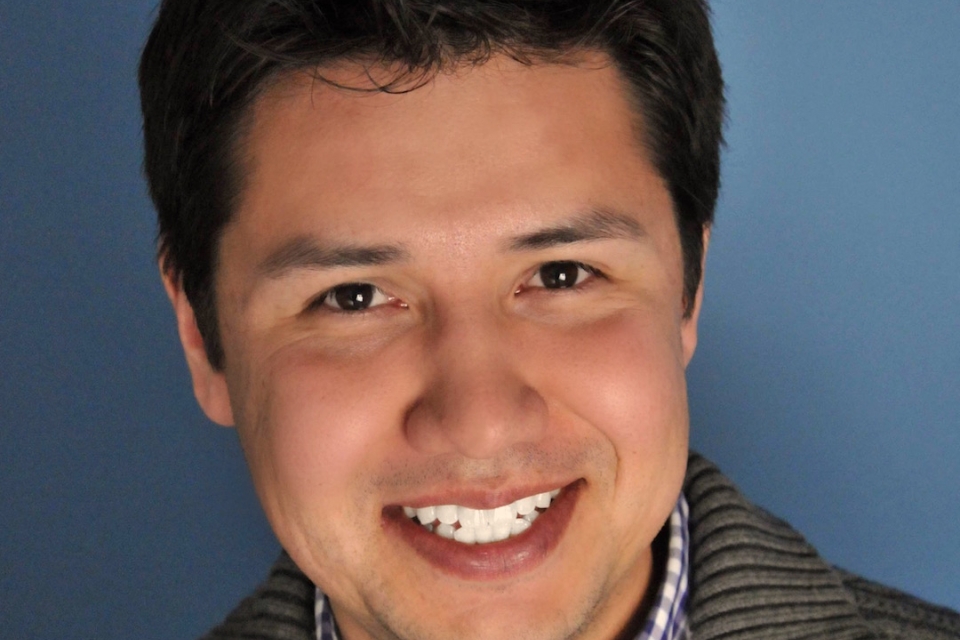The Corcoran School of the Arts and Design has announced Joseph Kunkel as its 2017-2018 William Wilson Corcoran Visiting Professor of Community Engagement. Mr. Kunkel is an architect and community designer who has worked extensively on research and building capacity in Native American communities.
As the William Wilson Corcoran Visiting Professor, Mr. Kunkel will lead the class “Social Change through Design” in the fall semester. The seminar will examine how art, design and design practices can impact communities and effect social change. The William Wilson Corcoran Visiting Professor position was made possible by the Corcoran Board of Trustees.
Mr. Kunkel, who is a Northern Cheyenne tribal member, will draw from his own experiences as a designer and educator. He currently serves as the executive director of the Sustainable Native Communities Collaborative (SNCC), and his research has led to the development of Best Practices in Tribal Housing, along with an online Health Homes Road Map for affordable housing in Indian country, funded by the Department of Housing and Urban Development (HUD).
In an interview with George Washington Today, Mr. Kunkel discussed his work, the major housing issues that tribal communities face and what he hopes to bring to GW and the Corcoran in the coming year.
Q: Can you tell us a little about where you are from and what drew you to architecture and design?
A: I grew up in New Jersey. My mother’s family is originally from the Northern Cheyenne reservation in southeastern Montana. Understanding that there was a dearth and lack of attention in the quality of housing on tribal reservations, I thought architecture was a space in which I could have impact on my own tribe and provide better housing opportunities to other tribal communities. As I grew to understand, it’s not just architecture or core design that provides those opportunities—planning, community development and financing are all part of understanding how projects come together.
There’s also the conceptual idea that everyone deserves good design. Historically, architecture and architecture education have been a place of privilege. At SNCC, we believe everyone should be able to afford access to quality design and planning, and we try to find ways to leverage resources to tribal communities around the country.
Q: What are some of the housing issues in tribal communities that your work addresses?
A: There are approximately 5.6 million tribal members in the country and 567 federally recognized tribes. On any given day, there are around 90,000 homeless tribal members and not enough housing that meets long-term needs. Public funding is also not there: The majority of funds come from the Indian Housing Block Grant through HUD, which gives tribes an average that falls just under $1 million a year—more or less, depending on the number of enrolled members.
Many tribal members don’t have access to mortgages or assets passed down from generation to generation, so the need is great, and it compounds annually. What we’ve been trying to better understand is how we can leverage federal resources, philanthropy and academic institutions to find new methods of creating equity and equality on reservation lands. We look at this as an economic development issue, and we think about how we can take funds and seed out multiple projects. And if we can develop financial literacy in our tribal communities, we have an ability to impact those large housing need numbers.
Q: You’ve worked directly with tribal leaders and community members to come up with housing solutions. How important is direct community engagement in the design process?
A: A lot of the questions that we’re asking are really, “What do you need?” Those questions historically haven’t been asked. We want to understand the critical needs and the spaces where people are gathering and living, and we want to design around that. I think that starts to develop a design language and a way of thinking that creates culturally appropriate housing, and it helps people get to a point where they can say, “This is my home, and I want to take care of it.”
Q: In your class at the Corcoran School, what do you hope students will learn about the intersection of design and social change?
A: It’s about creating a space of self-awareness, a space of acknowledgement and understanding that there’s potential to impact and effect change from a tribal side and a non-native side. I think the conversation isn’t tribal-specific; these ways of social engagement and developing dialogue can apply to rural areas and other parts of the world. These values have a large breadth, and they can influence how people think and see development in marginalized communities.
Q: What made you want to work with students in D.C., and what are you looking forward to?
A: A lot of students are drawn to D.C. for policy work and access to nonprofits doing community-development work. We’re hoping to educate policymakers and show that design has the potential to impact policy, and we want to show that designers and artists need to be at the table at the beginning of conversations. Designers and architects are usually brought on after developers have made major decisions, but if we join the conversation earlier, we can have a larger impact.
At GW, there’s the potential to collaborate with nonprofit design firms and organizations outside of GW and also internally. We work closely with the public health sector, and there are cross-collaborations that could be of importance. In other projects, we’ve looked at how design can address health issues—for example, we’ve examined how the design of heating ventilation can affect communities with high rates of asthma. So there are many connections to be made.


